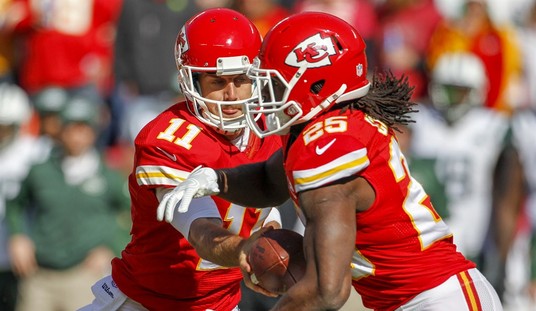One of the biggest causes of warship losses is self-immolation. Remember the Maine? It is now believed that the USS Maine might have blown herself up in what was the equivalent of a coal dust explosion that set off her magazines rather than from a Spanish mine. The evidence is inconclusive.
There is less controversy in the case of the HMS Vanguard, a dreadnought class battleship that blew up in Scapa Flow in 1917. “Just before midnight on 9 July 1917 at Scapa Flow, Vanguard suffered an explosion, probably caused by an unnoticed stokehold fire heating cordite stored against an adjacent bulkhead in one of the two magazines which served the amidships gun turrets ‘P’ and ‘Q’. She sank almost instantly, killing an estimated 804 men; there were only two survivors.” During World War 2 the Japanese battleship Mutsu sank the same way. She survived Midway and the battle of the Eastern Solomons and returned to Japan in 1943 where a magazine explosion sank “the ship with the loss of 1,121 of the 1,474 crew and visitors.”
For most of the Second World War the danger of an exploding warship magazine was simply regarded as an occupational risk. Second World War carriers were floating bombs. They carried large quantities of gasoline, munition of all sorts and had wooden flight decks.
But the search for ways to keep warships from blowing themselves up — principally by switching over to ‘insensitive munitions’, explosives that don’t readily explode when heated or blasted — really gathered momentum after the World War 2 when the US nearly lost two supercarriers to munitions accidents. Perhaps the best known incident was the 1967 fire on the USS Forrestal. The Navy had by then introduced bombs with less sensitive explosive fillers. But as the bombing campaign ramped up the Navy began to run out of modern bombs. So they used old bombs found in a jungle dump from Subic Bay.
The day before the accident (28 July), the Forrestal was resupplied with ordnance from the ammunition ship USS Diamond Head. The load included 16 1000-lb. AN-M65A1 “fat boy” bombs (so nicknamed because of their short, rotund shape), which the Diamond Head had picked up from the Subic Bay Naval Base and were intended for the next day’s second bombing sortie. The batch of AN-M65A1 “fat boys” the Forrestal received were surplus from World War II, having spent roughly three decades exposed to the heat and humidity of the Philippine jungles while improperly stored in open-air Quonset huts …some were stamped with production dates as early as 1935. Most worryingly of all, several bombs were seen to be leaking liquid paraffin phlegmatizing agent from their seams, an unmistakably dangerous sign the bomb’s explosive filler had degenerated with excessive age and exposure to heat and moisture.
According to A-4 Skyhawk pilot Lieutenant Rocky Pratt, the concern and objection induced in the Forrestal’s ordnance handlers was striking, with many afraid to even handle the bombs; one officer wondered out loud if they would even survive the shock of a catapult assisted launch without spontaneously detonating, and others suggested they immediately jettison them into the sea….
Faced with this, but still needing 1000-lb. bombs for the next day’s missions, [Captain John] Beling demanded the Diamond Head take the AN-M65A1s back …
With orders to conduct strike missions over North Vietnam the next day and no replacement bombs available, Captain Beling reluctantly concluded he had no choice but to accept the AN-M65A1 bombs in their current condition. In one concession to the demands of the ordnance handlers, Beling did agree to store all 16 bombs alone on deck in the “bomb farm” area between the starboard rail and the carrier’s island until they were loaded for the next day’s missions; standard procedure would have been to store them in the ship’s magazine with the other bombs (where an accidental detonation could easily have destroyed the entire ship).
Interestingly the ammunition handlers in Subic Bay believed the fat boys were being transferred afloat to be deep-sixed as no sane man would consider using them. These bombs nearly sank the Forrestal the next day. A Zuni rocket was discharged by an electrical fault into a deck park of attack aircraft loaded with fat boys, one of them piloted by LCDR John McCain, who literally hotfooted it out. The fire ignited nine bombs and Forrestal was saved only by her armored flight deck and damage control heroics. Heroics is not too strong a word, for it takes someone very crazy or brave to approach a fire where a bomb has just gone off knowing another might detonate at any moment.
[jwplayer mediaid=”38153″]
The Enterprise was next. In 1969 while sailing near Pearl Harbor “the exhaust heat (about 850°F) from an aircraft engine-starting unit (an MD-3A “Huffer”) was inadvertently directed onto a pod containing four 5-inch ZUNI rockets hanging under the wing of an F-4J aircraft. The heat caused one or more of the warheads to detonate in the pod.” Another chain reaction ensued involving 18 munitions, some of them bombs.
It proved two things to admirals: that carriers are awful hard to sink and that bombs are very dangerous things. The Enterprise accident impelled the Navy to issue a requirement for insensitive fillers. The Viet Cong might not be able to sink a carrier, but bombs like the fat boy could.
The Russians apparently continued to use sensitive explosives, a circumstance which led to the demise of the submarine Kursk. The giant missile sub became a sort of USS Forrestal underwater.
The Kursk submarine disaster occurred during a major Russian naval exercise in the Barents Sea on Saturday, 12 August 2000. The Kursk … was preparing to load a dummy 65-76 “Kit” torpedo … a faulty weld in the casing of the practice torpedo caused high-test peroxide to leak, which caused the kerosene fuel to explode. The initial explosion destroyed the torpedo room, severely damaged the control room, incapacitated or killed the control room crew, and caused the submarine to sink. The fire resulting from this explosion in turn triggered the detonation of between five and seven torpedo warheads [the] explosion took place two minutes and 15 seconds later, and was powerful enough to register on seismographs as far away as Alaska.
The loss of the Maine and the Kursk were separated by over a hundred years. But one thing has not changed since then. Admiral Murphy is still at sea. The tendency for accidents to happen should be remembered always, for not only do wars sometimes start by accident, but so do ships sink. For as long as warships are filled to overheads with things that go BOOM, things will go boom.
Recently purchased by Belmont Club visitors:
Manhattan Queens
The Bogeyman
Unfinished Business
A Canticle for Leibowitz
Neptune’s Inferno: The U.S. Navy at Guadalcanal
Philips Sonicare HX5610/30 Essence 5600 Rechargeable Electric Toothbrush
Gaiam Balance Ball Chair, Blue
Did you know that you can purchase some of these books and pamphlets by Richard Fernandez and share them with you friends? They will receive a link in their email and it will automatically give them access to a Kindle reader on their smartphone, computer or even as a web-readable document.
The War of the Words for $3.99, Understanding the crisis of the early 21st century in terms of information corruption in the financial, security and political spheres
Rebranding Christianity for $3.99, or why the truth shall make you free
The Three Conjectures at Amazon Kindle for $1.99, reflections on terrorism and the nuclear age
Storming the Castle at Amazon Kindle for $3.99, why government should get small
No Way In at Amazon Kindle $8.95, print $9.99. Fiction. A flight into peril, flashbacks to underground action.
Storm Over the South China Sea $0.99, how China is restarting history in the Pacific
Tip Jar or Subscribe or Unsubscribe to the Belmont Club










Join the conversation as a VIP Member